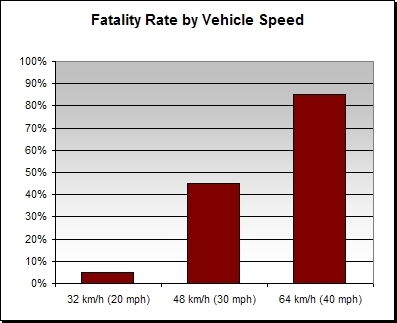Thursday, January 12, 2017
How Speed Limits Are Set: Need For a New Paradigm
Our roads are usually designed so that motorists feel safe traveling faster than the speed limit. Speed is probably the biggest factor in determining if a pedestrian or bicyclist is killed in a crash. In the article Why The Rules Of The Road Aren’t Enough To Prevent People From Dying author Anne Marie Berry-Jester discusses how speed limits are set and why the current method leads to more dangerous streets:
Roads are planned according to a concept known as design speed, basically the speed vehicles are expected to travel.3 Engineers often apply the 85th percentile rule to a similar road to arrive at the design speed for the proposed road. It might make sense, then, that the design speed would become the speed limit. However, in practice, the design speed is often used to determine the minimum speed of safe travel on a road.
When building roads, the 85th percentile calculates the speed the engineers hope or intend people will travel, but then it’s used to design a road to meet that speed at a minimum, with a factor of safety allowing for faster travel,” he told me.
In other words, by adding additional “safety” to the road, it is designed to make people comfortable going faster than the engineers’ intended speed.
A while back we reported on a new USDOT document that included guidance to traffic engineers, encouraging them to use other criteria for setting speed limits: Bicycle and Pedestrian Funding, Design, and Environmental Review: Addressing Common Misconceptions.When building roads, the 85th percentile calculates the speed the engineers hope or intend people will travel, but then it’s used to design a road to meet that speed at a minimum, with a factor of safety allowing for faster travel,” he told me.
In other words, by adding additional “safety” to the road, it is designed to make people comfortable going faster than the engineers’ intended speed.
Labels: 85th percentile, design speed, speed limit
Comments:





Post a Comment